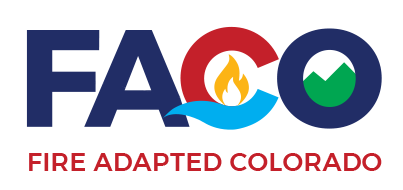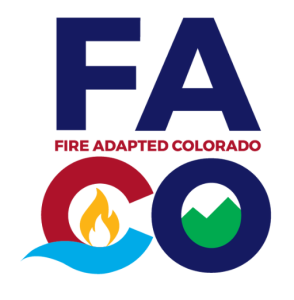The Art and Science of Home Wildfire Evaluation
AUG 10, 2017

The Art and Science of Home Wildfire Evaluations
Author: Wendy Fulks, with contributions from Eric Lovgren
This past spring, FAC Net asked our members some questions about their core FAC practices. We wanted to understand more about their work on, and interest in, things like:
- Improving local workforce capacity for mitigation work;
- Informing and rehearsing evacuation;
- Providing slash pick-up or drop-off; and
- Cultivating local champions/volunteers.
Another practice we asked about was “developing/providing home ignition zone assessments and education.” More of our members, by far, reported “excelling” at this practice versus any other practice.
So, clearly, wildfire home evaluations can be a key part of helping communities live with wildfire. On the face it seems obvious why these assessments are important. We need homeowners to reduce their vulnerability to wildfires, and to do that they need specific advice about what to do. At a June Fire Adapted Colorado workshop in Eagle, I learned that there’s much more to it.
Wildfire Home Evaluations Are Important Because …
This was the first topic of discussion for the 18 people gathered around a table in the Emergency Operation Center in Eagle County, Colorado. Participants reported that, in addition to being a strategy to spark action in homeowners, they also use home assessments to:
- Enforce building codes and land use regulations;
- Help public safety agencies track risk reduction progress over years or decades;
- Inform first responders about hazards to be aware of in the event of a wildfire; and
- Initiate long-term relationships with homeowners.
Rapid vs. Comprehensive Assessments
Most participants reported that they conduct two types of assessments: rapid, “60-second” assessments from a public right-of-way, and comprehensive, “60-minute” assessments with the homeowner(s) participating in a walk around their home and property. The rapid assessments yield an “adjective” risk rating (e.g., low, moderate, high), and most comprehensive assessments produce a set of property-specific recommendations. Practitioners use the curbside or “60-second” risk rating’s results to motivate residents to request the comprehensive assessment.
In some instances, the comprehensive approach is needed to fairly apply building code and land use regulations. Other programs conduct comprehensive assessments to motivate owners to act by offering a certificate for completed mitigation that the homeowner can give to his or her insurance company. (Allstate and USAA Insurance recognize Wildfire Partners-issued certificates as proof of proper mitigation. State Farm recognizes them for renewal business.)

Many fire departments provide comprehensive assessment services for free; however, some organizations feel that if they charge a nominal fee, residents will be more likely to follow through and participate in the assessment.
We Need More Standardization
The group headed into the field twice to practice using two different apps for conducting comprehensive assessments. As I observed the professionals (and learned about real stucco vs. flammable, plastic “stucco,” the existence of inclinometers, potential unintended consequences of removing trees, etc.) it quickly became apparent that there’s some subjectivity to the process as well as differences of opinion about what residents need to do.

Many practitioners spoke about the need to consider what a homeowner would be likely to do given time and economic constraints, and what they care about aesthetically. There truly is no “one-size-fits-all” approach to wildfire mitigation, and discussions underscored the importance of giving owners an achievable path to prepare their property for the return of fire. We also generally agreed that it is best to highlight what the owners are doing right on the property, rather than simply handing them a long list of needed improvements. Relationship building is just as important as hazard identification.
The National Fire Protection Association has created a national Home Ignition Zone training curriculum, and they are also developing a certification program for assessors. Programs like Boulder County’s Wildfire Partners and Eagle County’s REALFire invest a great deal of time in field training for new assessors. However, with so many things to consider, it’s going to be a challenge to get most assessors consistently providing the same recommendations.
Jacks and Jills of All Trades
In addition to coming away from the workshop with a better understanding of some of the challenges related to wildfire home evaluations, I also returned home with added respect for those who do this work. After a day and a half of discussion, I concluded that a good mitigation specialist needs to be part building inspector, fire ecologist, deal broker, fire fighter, landscaper, communicator, botanist, psychologist, information technology specialist, forester, editor and photographer. And they need to have credibility and a professional demeanor, as well as the ability to walk onto a property and create a lasting impact on that owner in 60 minutes or less.
This article has been reprinted from the Fire Adapted Communities Learning Network Website @ https://fireadaptednetwork.org

